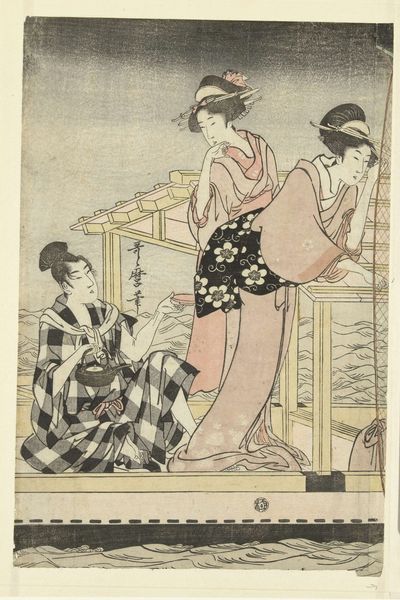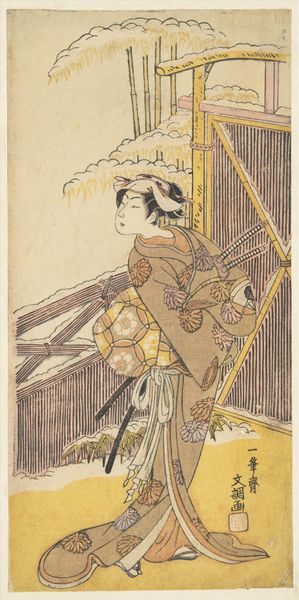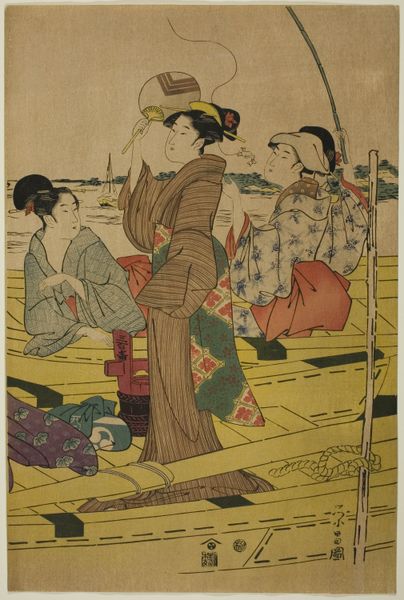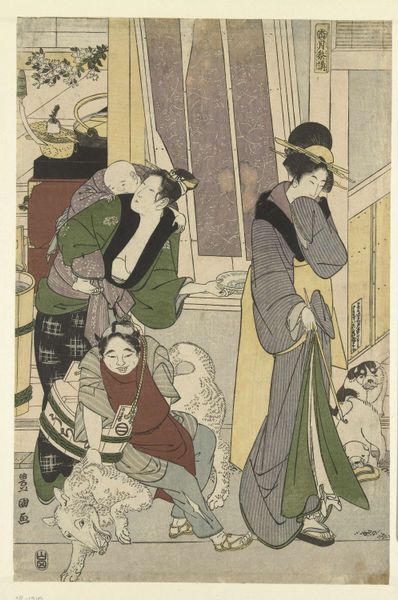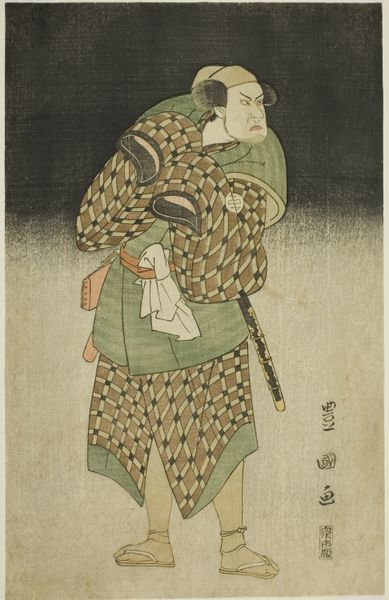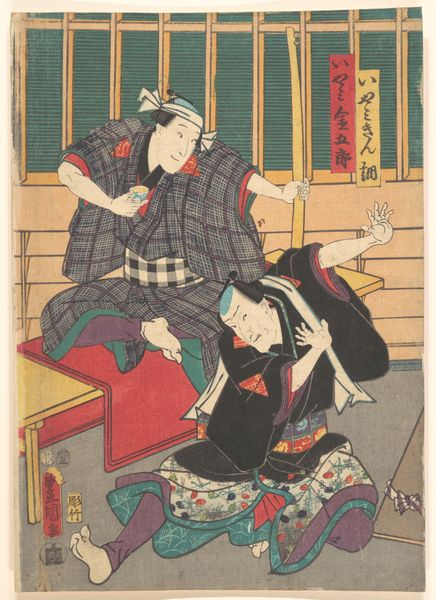
Scene from the Play Yoshitsune and the Thousand Cherry Trees (Yoshitsune senbon zakura) 1784
0:00
0:00
print, woodblock-print
# print
#
asian-art
#
ukiyo-e
#
figuration
#
woodblock-print
#
genre-painting
#
erotic-art
Dimensions: 12 7/16 x 5 3/4 in. (31.6 x 14.6 cm)
Copyright: Public Domain
Curator: This woodblock print, crafted by Katsukawa Shunko around 1784, is titled "Scene from the Play Yoshitsune and the Thousand Cherry Trees," currently residing at the Metropolitan Museum of Art. What strikes you most at first glance? Editor: Well, initially, there’s a raw tenderness here that surprises me. The vulnerable upward gaze of the kneeling woman contrasts vividly with the world-weary expression of the standing man. The colours are faded to pale pastel washes, reinforcing the impression of pathos. Curator: Indeed. This piece depicts a scene from a highly popular Kabuki play. The man, likely playing a lower-class role, is stoic perhaps even fatigued, while the woman’s upward gesture holds longing or supplication, charged with emotional resonance. Ukiyo-e prints were, in part, the pop culture of their day, reflecting popular themes from theatre. Editor: So, we’re observing an interaction layered with theatrical artifice. The man is burdened, a physical object tied around his back which mirrors the slump in his posture. The woman's gentle expression is one of desire, so they feel tied to a preordained narrative of unrequited or difficult love. There's even humour—perhaps, dare I say it, a tad erotic? Curator: These elements blend together very typically in Ukiyo-e and it reminds us that many of these woodblock prints engage with subtle expressions of human intimacy. The "pillow books," shunga prints from the period hint further to this tradition of artworks which act as erotic imaginariums. Also note how the composition divides our subjects in a classic Ukiyo-e manner, and how both individuals find themselves in distinct and unequal spaces that adds drama and deepens psychological readings. Editor: It’s amazing how much unspoken narrative lies embedded within this seemingly simple composition. These subtle clues can speak volumes about desires and vulnerabilities, hinting to hidden social narratives and complexities. We only know what little has been extracted, so we fill in the gaps with our cultural baggage, in perpetuity. Curator: Precisely. These art objects function almost like dreams or even Rorschach tests that beckon audiences to explore the interplay between representation and projection. Editor: Yes, that’s why I am continually captivated by them. Thanks.
Comments
No comments
Be the first to comment and join the conversation on the ultimate creative platform.
